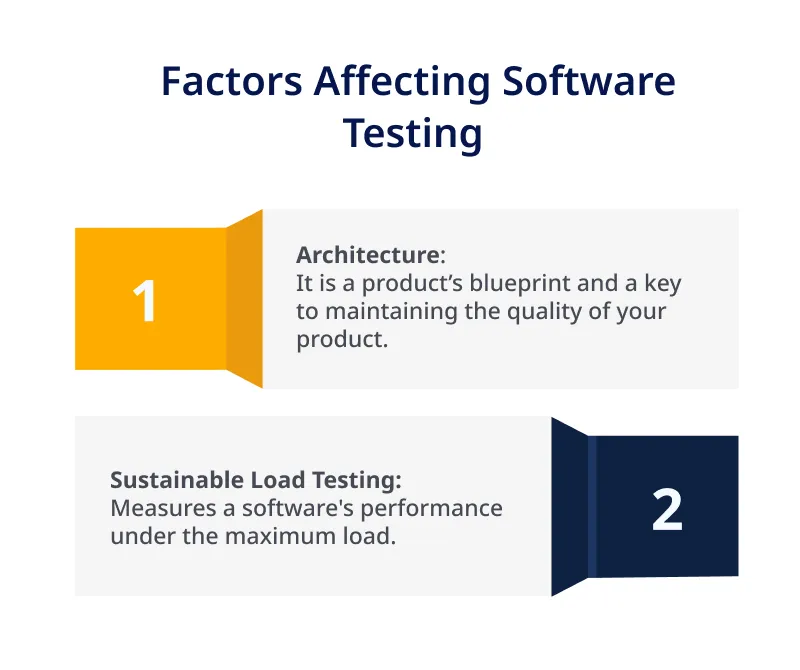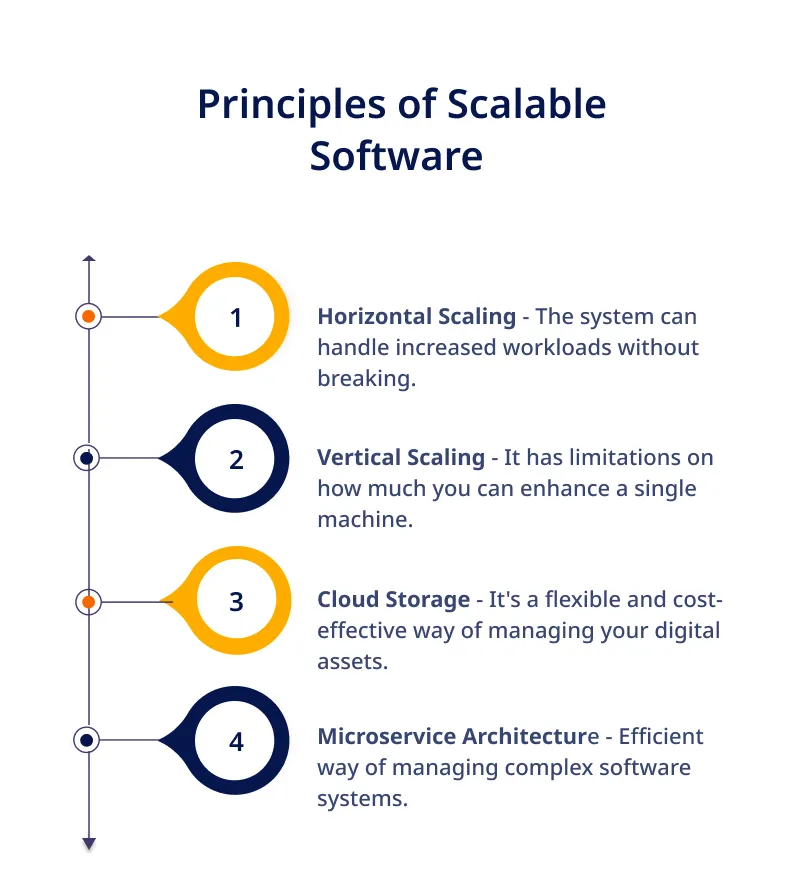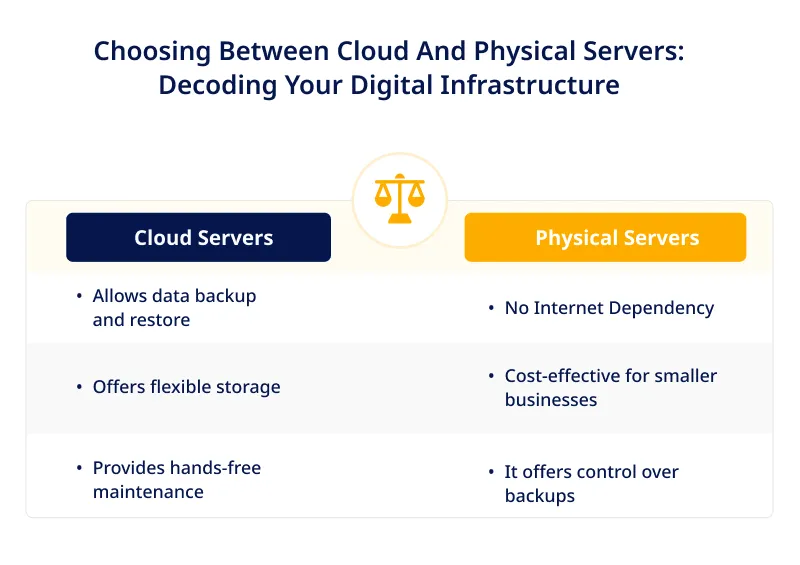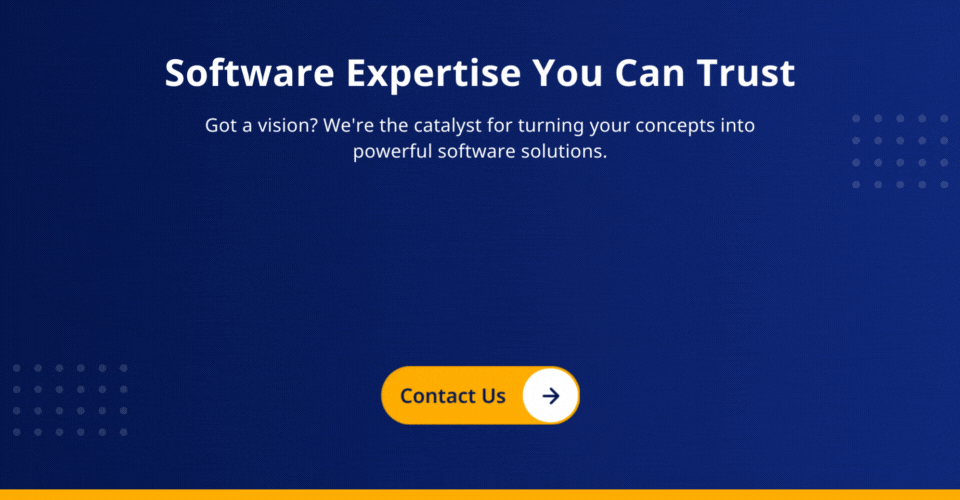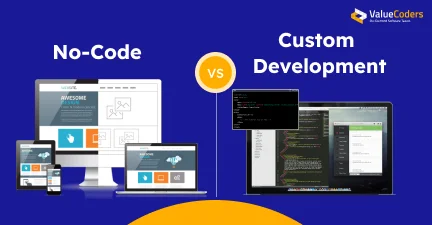Have you ever been to a new restaurant, excited to try their food, but stuck in a long, slow line?
Picture this: you’re the restaurant owner, happy to see the crowd, but as more customers arrive, the kitchen can’t keep up. The service becomes slow, and the once-efficient restaurant starts struggling.
In software development, this is like when a new product faces issues as more users join. The system slows down, and users get frustrated. This happens when the software isn’t built to handle a lot of users, similar to a restaurant not prepared for a sudden rush of customers.
Poor software design can cause server problems and crashes, leading to unhappy users and a bad reputation. This blog post is a custom software development guide and will talk about how to avoid these product development problems, ensuring smooth growth for your product.
Understanding Scalability
Scalability is the ability of a software system to smoothly manage rapid growth.
If your software is scalable, you can relax knowing that even if a million users worldwide decide to use your product one day, it can handle the load without breaking a sweat.
So, what does this mean for your business?
Scalable software product development services ensures your business remains stable despite the ever-changing nature of the industry, just like a well-prepared kitchen keeps the dinner party running smoothly.
Having scalable product development doesn’t just keep your business afloat; it lets it sail smoothly through the ups and downs of industry trends.
It’s like having a reliable kitchen that allows you to be more agile and makes upgrades more cost-effective in the long run.
Achieving software scalability is no walk in the park. It requires a keen eye for development details, like perfecting a recipe, along with the best practices of software engineers.
It’s a meticulous software product development process, but the rewards are worth it – a resilient software system that can handle whatever your users throw at it.
Impact of Non-Scalable Products
On the other hand, non-scalable products hinder user experience and jeopardize brand reputation. As user demands grow, scalability becomes imperative to maintain customer satisfaction.
Learn how to enhance your product's ability to grow smoothly.
Factors Affecting Software Scalability
Let’s understand the factors that influence software scalability.
1. Role of Architecture: Crafting the Blueprint
Under engineering scalability strategies, architecture is like the blueprint for your product. An organized software architecture is the key to maintaining the quality of your product. Think of it as a well-thought-out plan for your cake – every ingredient in its place, every step meticulously outlined.
Scalable product development considerations begin with architecture. Every nook and cranny of your software architecture requires thoughtful consideration. Like reducing the baking time for a cake’s delicate areas, you want to identify and address runtime bottlenecks.
You also want to trim down excesses, like scaling back caching to ease the memory load. Developing a scalable system architecture is an art, not a science. It’s about finding the perfect balance.
2. Sustainable Load Testing
Imagine you’ve perfected your cake recipe, but how do you know it’ll withstand a party-sized demand? This is where sustainable load testing comes in.
Determining how many users your system can support is a challenging yet essential task. Sustainable load testing measures your software’s performance under the maximum load before the system crashes.
Dive into sustainable load testing and fortify your system against unforeseen challenges.
Principles of Scalable Software: Unveiling the Basics
When we talk about building scalable software or product development, it’s like ensuring your computer setup can handle whatever you throw at it. Let’s explore the core principles in straightforward terms.
1. Horizontal Scaling: Adding More Power
Horizontal scaling is upgrading your computer setup by adding more machines or servers. It’s like having several computers working together, and if you need more power, you just throw in additional machines.
Each machine operates independently, ensuring the overall system can handle increased workloads without breaking a sweat.
Also read: Microservices: Scalable and Flexible Software Development
2. Vertical Scaling: Boosting Performance
Now, vertical scaling involves boosting the power of a single machine. It’s like upgrading your computer’s processor or memory. This approach works well for routine tasks, but there’s a limit.
Trying to make a single machine super powerful has drawbacks, especially when dealing with heavy workloads. It can lead to performance issues and has a cap on how much you can enhance a single machine.
3. Cloud Storage: Flexible Digital Space
Think of cloud storage as a digital storage unit that you rent. It’s like having a virtual space to keep your data and applications. The beauty of the cloud is that you can scale up or down based on your needs. If you need more space, you simply pay for the extra storage. It’s a flexible and cost-effective way of managing your digital assets.
4. Microservice Architecture: Modular Functionality
Microservice architecture is like having your software divided into smaller, independent modules. Each module, or microservice, does a specific job. It’s similar to having different apps on your computer that work together.
This way, if one part is busy, the others can keep running smoothly. It’s a more flexible and efficient way of managing complex software systems.
In a nutshell, these principles ensure seamless, scalable product development without causing disruptions.
Explore the pivotal role of organized architecture in maintaining product quality.
Choosing Between Cloud and Physical Servers
When setting up the digital backbone of your business, the choice between cloud and physical servers is akin to leasing a fully furnished office and building your headquarters from scratch.
Let’s unravel the nuances to help you make an informed decision.
Cloud Servers: The Virtual Advantage
Imagine cloud servers as your digital collaborators, providing virtual spaces hosted on a cloud computing platform. It’s like having an office in the digital realm where you can conduct your business seamlessly. Here are the key aspects:
Pros:
- Data Backup and Restore: Your digital assets are like prized possessions stored in a secure vault. The cloud instantly creates a backup, ensuring your data is retrievable from anywhere with an internet connection.
- Flexible Storage: Need more room for your digital expansion? Cloud servers allow you to scale your resources up or down based on traffic, ensuring you only pay for what you need.
- Hands-Free Maintenance: While you focus on growing your business, the cloud service providers handle the nitty-gritty of server updates and maintenance.
Cons:
- Internet Dependency: If the internet takes a coffee break, accessing your digital assets might be temporarily on hold.
- Cost Considerations: Depending on your business’s reliance on uptime and instant data recovery, the costs of cloud services outweigh the benefits.
- Migration Challenges: Moving from traditional systems to the cloud can be like moving houses – it takes time and effort and might disrupt your operations.
Physical Servers: Your In-house Fortress
Now, picture physical servers as the bricks-and-mortar foundation of your business operations. These servers are dedicated to your specific needs, like having a bespoke office designed to your specifications. Let’s explore:
Pros:
- Control Over Backups: Your critical data is in your hands, accessible only to you without any third-party involvement.
- No Internet Dependency: Access your data anytime, anywhere, without worrying about internet fluctuations.
- Cost-Effective for Smaller Businesses: Physical servers can be a more budget-friendly option for small and mid-sized companies.
Cons:
- No Uptime Guarantees: Unlike the virtual world, physical servers might face downtime, impacting your operations.
- Space and Resource Requirements: Servers need a designated physical space, power, and cooling for optimal functioning.
- Management Overhead: While leasing servers can ease some costs, managing your data center requires hands-on expertise.
Factors to Consider: Timelines, Compliance, and Workload Consistency
Deciding between cloud and physical servers involves weighing various factors. You need to consider:
- Your business’s timelines
- Adherence to compliance regulations
- Predictability of your workload
- Expertise available in your in-house team
It’s not just about choosing a server; it’s about aligning your digital infrastructure with your business goals.
Cloud vs. Physical Servers – make an informed decision for your digital infrastructure.
Case Study: Building a Scalable Software System
A jewelry platform faced challenges handling peak loads, necessitating a scalable solution.
-
Implementation with Microservice Architecture:
Implementing a microservice architecture allowed the platform to distribute loads, efficiently increasing system maintainability.
-
Benefits for the Client:
The scalable software implementation improved business outcomes, reduced resource overheads, and enhanced user experience.
Conclusion
The importance of scalable product development in the digital landscape cannot be overstated. It’s the linchpin for long-term business stability, safeguarding against the pitfalls of an ever-evolving technological terrain.
Picture it as future-proofing your digital endeavors – a proactive approach ensuring your products can gracefully adapt to the digital realm’s dynamic demands and custom software development challenges.
Encouragement for Best Practices of Software Engineering
To the architects of the digital future, our software engineers, the message is clear – prioritize scalability.
It’s not just a technical checkbox; it’s a strategic move that propels your creations beyond the immediate and into the enduring.
As you code, test, and innovate, remember that scalability isn’t just about handling more; it’s about crafting software that stands the test of time.
At ValueCoders, we understand that in this digital age, where change is the only constant, scalable product development isn’t merely a luxury; it’s a necessity.
So, let’s forge ahead, armed with the principles of scalability and best practices of software development, to build a digital landscape that not only meets today’s demands but anticipates and embraces the challenges of tomorrow by hiring dedicated software development teams.



